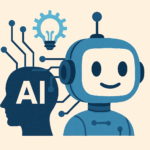AI Uses in Fundraising — Opportunities, Pitfalls, and Risk Management

The rise of artificial intelligence (AI) has introduced exciting new opportunities for fundraising professionals, transforming how charities identify prospects, steward donors, and craft compelling messages. But with every innovation comes a learning curve, and it’s important to navigate the world of AI with both optimism and caution.
How Fundraisers Are Using AI
- Donor Prospecting & Segmentation
AI tools can comb through databases, social media, and public records to identify potential donors with a high capacity and affinity for giving. Machine learning models can rank supporters based on their giving propensity, allowing fundraisers to prioritise their outreach. - Personalised Messaging at Scale
AI-driven platforms can write and tailor emails, appeal letters, grant proposals, and even social media posts based on supporter behaviour, interests, and past giving history. This means fundraisers can send more relevant communications without spending hours drafting messages individually. - Predictive Analytics
Predictive models powered by AI help charities forecast giving trends, donor retention rates, and even campaign outcomes. This helps in adjusting tactics before revenue shortfalls occur. - Chatbots & Donor Support
AI-powered chatbots can handle basic inquiries on donation pages, freeing up staff to focus on relationship-building and complex donor interactions. - Data Cleanup & CRM Hygiene
AI tools are increasingly being used to deduplicate records, identify data entry errors, and keep supporter databases clean and accurate.
The Cons & Risks
While the benefits are compelling, AI in fundraising isn’t without its challenges:
- Loss of Human Touch: Generated messages can sometimes feel impersonal or robotic, risking donor disengagement.
- Bias in Data: AI tools are only as good as the data they learn from. If that data includes historical bias (e.g., favouring certain types of donors), it can reinforce inequity.
- Privacy Concerns: Donors may be uncomfortable with overly personalised insights if they don’t understand how their data is being used.
- Overreliance on Automation: Fundraisers risk losing valuable relationship instincts if they lean too heavily on AI for decision-making.
Risk Mitigation Strategies
- Human Oversight
Always have a human review the generated content before it’s sent to donors. This ensures accuracy, tone, and alignment with your mission. - Transparency
Be open with supporters about how data is used. This builds trust and ensures compliance with data privacy laws. - Training
Equip fundraisers with the skills to use these technology tools effectively — not just technically, but ethically and strategically. - Pilot Testing
Before rolling out new tools across your organisation, test them with a small segment of your donor base to evaluate effectiveness and adjust as needed. - Inclusive Data Sets
Use diverse data inputs when training models to reduce bias and make giving opportunities more equitable.
AI is rapidly becoming a powerful ally in the fundraiser’s toolkit. When used wisely, it can help nonprofit professionals better understand, connect with, and inspire their donors. But like any tool, its effectiveness lies in how it’s wielded. A blend of strategy, empathy, and accountability will ensure that AI enhances — rather than replaces — the art of fundraising.
